This journal is brought to you by…
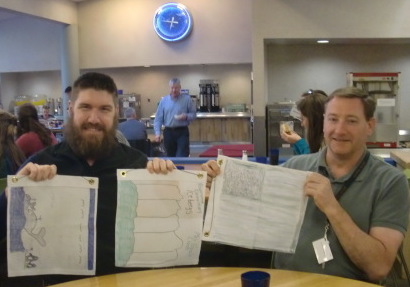
- Mrs. McKinney’s 3rd grade class at Lakewood Elementary
- Karen Goss and her 1st grade class at Riverwood Elementary
- Lorelai Booker of Booker homeschool
McMurdo Station
Where do you sleep? Where do you work? What do you eat? What’s life like in Antarctica?
These are a few of my ‘most popular’ questions. And I’m happy to share a bit of my Antarctic experience with you and answer those questions in this journal. First, let me briefly introduce you to McMurdo Station. This is where I’ll call home for the next six weeks.
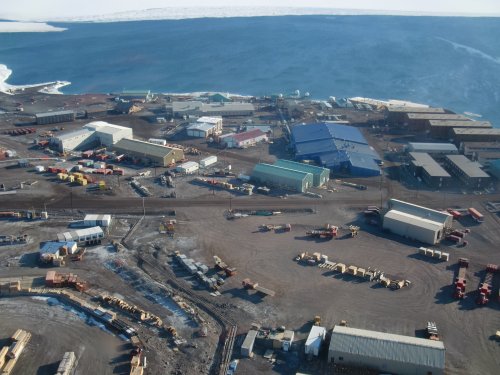
During the Antarctic summer, over a thousand people live and work at McMurdo. It’s like a small city! There are science labs (like the one I’m working in!), a galley where we eat, dorms where we sleep, a store, a post office, a fire house, a doctor’s office, and much more!
We have nearly all the comforts of home, except of course for warmer weather!
Let’s take a closer look at those questions.
The dorm - where I sleep
I consider myself very fortunate!
Many of my fellow PolarTREC teachers have to ‘rough it’ in field camps. If you are not up for this challenge, it can be harsh. Field camps are often very isolated; in fact, your closest neighbor may be hundreds of miles away. Wow! Living and working conditions are cramped. Teachers often share stories about eating outdoors or in a very small community kitchen. This kitchen may also double as a work station or storage area. Then, there are the sleeping arrangements. These include tents; yes, I said tents, or maybe a small bunk. And showers? Where are the showers? You’d better be prepared to shovel some snow if you want a shower. Life in the field can be rough!
The Weddell seal team is very lucky! We bunk down in the comfort of a dorm – dorm 208 to be exact. Don’t get me wrong, it’s not the lap of luxury, but it sure does beat a field camp. Take a look at my humble abode.
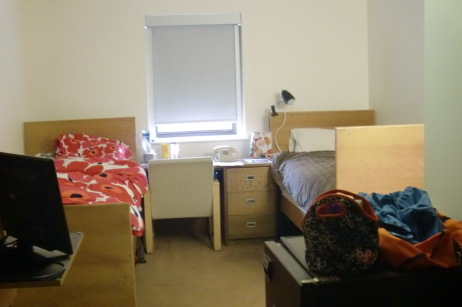
I share a room with Dr. Jennifer. We both have a comfortable twin bed, which is plenty big for me, a dresser for clothes, and a desk. However, as you can see, my desk is used for storage. Since we work in the lab, the desk provides me with a little more room here in the dorm. Dr. Jenn has been to Antarctica several seasons, so she’s a pro. Notice the colorful comforter she brought from home. These little bits of comfort make a big difference down here.
Galley - where I eat
For those of you who know me, you won’t be surprised to find out that the galley is one of my favorite places in this little ‘town.’ It’s where we eat, of course. And the food is actually quite good, most of the time. Fueling your body is very important in Antarctica. It takes a lot more calories to keep your body going in the coldest place on Earth. Also, eating keeps your body warm!
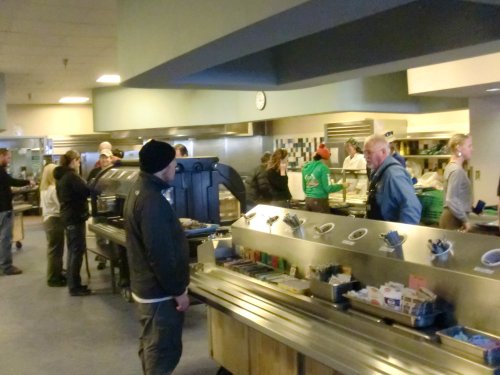
There’s no lack of food here. And if I’m not careful, I’m going to get spoiled. Candy bars are an excellent snack to take to the field. Why? Because they taste just as good frozen – they’re just a bit harder to chew. Have you ever eaten a frozen Snickers bar? Yum! But those aren’t the only goodies available. McMurdo Station has a reputation for having excellent baked goods, such as breads and cakes. Check out this chocolate cake that Heather is making. Mmmmm!
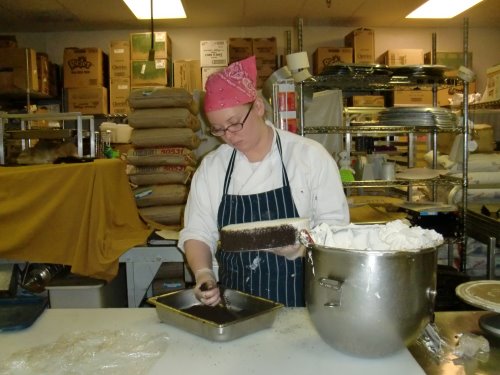
While all of these treats are tempting, we do make healthy food choices and eat a well-balanced meal. See, here’s a picture of my lunch.

Crary Science Lab - where we work
The Crary Science Lab is where we work. Ok, that’s not 100% true; we spend most of our time in the field working with the seals. But, when we’re on base, you’ll often find us in the lab processing and analyzing the data we’ve collected.
How do you think the Crary Labs were named? If you are guessing they were named after a scientist, you’d be correct. The Crary Science Labs where named for Alfred P. Crary (1911-1987), a pioneer in polar geophysics and glaciology. He was also the first person to set foot on both poles!
Here’s a birds-eye view of the Albert C. Crary Science Labs.
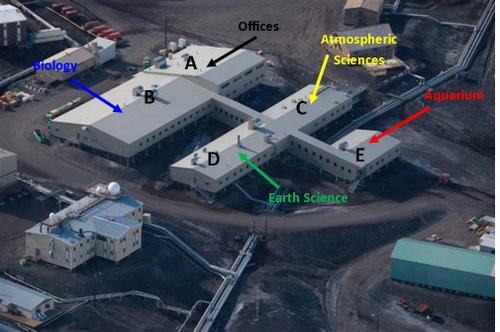
The Crary Science Lab building is quite large and has three major sections or ‘phases’ and 5 wings.
Phase 1 includes the biology wing (B) on the left and the offices and library (A) on the right.
Phase 2 hosts geoscience research, where you will find the earth sciences (D) and atmospheric science (C) wing.
Phase 3 is home to the aquarium and wet labs (E).
A ‘spine’ down the middle of the building connects the phases.
This research project keeps us busy and we don’t often have time to wander about, but I do hope I’ll have time to visit the aquarium during this stay. I love the touch tank (except for the 30 degree water!). Take a look at my previous post about the touch tank.
Extreme Recycling! Waste Management Center
In Memphis, I have two bins for my waste – one for trash and one for recycling. Here in McMurdo, it’s a completely different story! There are as many as 12 recycling bins!
Twelve bins! That is some extreme recycling!
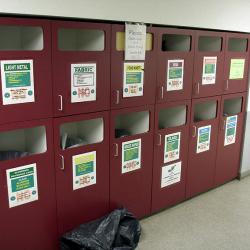
But that wasn’t always the case. After the Antarctic Treaty was signed in 1959, each nation that conducts scientific research here takes serious measures to keep the environment clean and reduce their footprint here.
In fact, we humans can’t leave anything behind in Antarctica. So, if there are no landfills or trash dumps, where does all this garbage go?
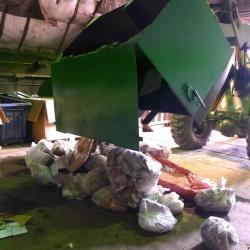
The Process
The recycling process starts with these bins. Well actually, it starts with each of us. We are expected to sort the trash appropriately. Once the bins are full, they go into large dumpsters. As you might expect, each bin goes into a separate dumpster. When the dumpsters are full, the Waste Management Center workers pick them up using forklifts and carry them to the Waste Management Center (or the ‘Waste Barn,’ as it’s generally called). I really wanted to have a go at driving the forklift, but it’s for professional use only!

Apparently, even with all those bins and very specific instructions, we McMurdo residents don’t always get it right! So, the ‘wasties’ (waste management workers) have to sort the trash a second time. Wow!
I’m definitely going to be more careful sorting my trash from now on, because this is a big job! The ‘wasties’ dump all of the trash out onto the floor and carefully sort each piece of trash into different categories.
Once everything is sorted, it gets put into its own box. These boxes are huge! The ‘wasties’ ship these boxes back to the U.S. to be recycled or put into landfills there. As I said before, nothing gets left behind!
Stay tuned for more of my tour of McMurdo!


Comments